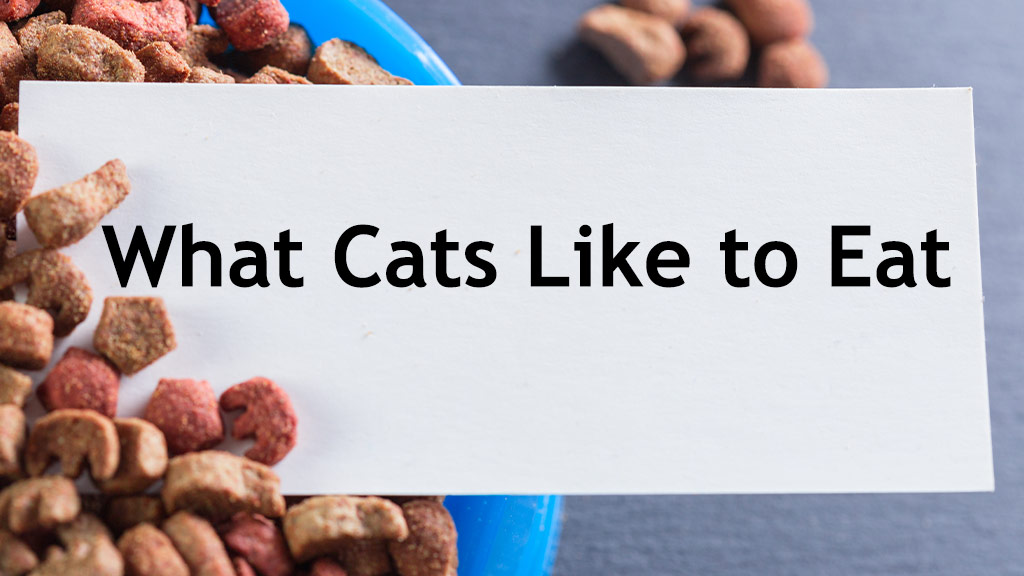Most cat owners face a dilemma: What do cats like to eat, and what should or shouldn’t cats eat? And, since cats are notoriously picky eaters, their owners have to take care of their diet preferences.
To better understand the eating habits and preferences of cats, we asked these questions from the experts and cat owners. Here’s what they have to say about what cats like to eat.
Leaving Wild or Feral cats aside, read the experts’ experience on what pet cats like to eat:
- Carnivorous Diet – Dr. Sabrina Kong, Veterinarian, DVM
- Protein-Rich Food – Jasmine, a Proud Cat Parent
- Animal-Based Diet – Alvina Miller, Pet Nutrition Specialist
- Protein-Rich Wet Food – Deepak Shukla, CEO of a Pet Brand
- Wet and Dry Commercial Foods – A Cat Lover
- Wet Food with Real Meat – A Cat Parent
Cats are Obligate Carnivores
- What Cats Like to Eat
Cats are obligate carnivores, meaning they require a diet rich in animal proteins. This includes but is not limited to chicken, turkey, beef, and fish. For wild or feral cats, these diet sources packed with essential nutrients are good for maintaining their health.
However, for pet cats, the story is different. They consume commercial foods (dry or wet) to meet their nutritional needs. In addition, a few “cat-literate-parents” give their cats cooked and unseasoned meats like fish or turkey for essential nutrients.
-
What Pet Cats Should Not Eat
Well, this is a highly controversial subject that still needs extensive research. Depending upon breed, age, and lifestyle, I believe cats should eat a balanced diet in moderation to thrive. However, several authentic feline researches suggest watching out for the following foods:
- Onions, garlic, and chives are dangerous for cats because they can damage red blood cells, resulting in anemia.
- Chocolate, caffeine, and alcohol are toxic for cats because of Xylitol, an artificial sweetener. These foods can affect cats ‘ nervous systems and, in severe cases, can trigger life-threatening hypoglycemia.
- Some benign items like grapes and raisins also pose risks for cats. They contain thiaminase, an enzyme that breaks down vitamin B1, leading to severe neurological issues.
- Raw meat or eggs carry bacterial threats like Salmonella, and therefore, pet cats should not eat them.
- What Pet Cats Can Eat
Cats’ eating preferences vary — some may turn up their noses at anything but their favorite kibble, while others relish variety. To add variety to your pet cats’ diet, consider the following foods in moderation:
- Cats love strong-smelling, high-protein foods. For example, they like the pungent aroma of fish, such as tuna or sardines. However, offer these foods to cats infrequently because of mercury concerns.
- Some cats enjoy small amounts of cooked pumpkin or spinach. Though these are excellent sources of fiber, never replace meat with vegetables. Offer them only as occasional treats.
- Freeze-dried chicken or salmon treats are good for training, but don’t make them a routine.
- Give dairy products like cheese or yogurt (in lactose-free forms) occasionally.
Three Tips to Feed Your Pet Cat
- Avoid free-feeding your pet cats as it can cause obesity.
- Stick to measured portions to support healthy eating habits.
- Use puzzle feeders or slow-feed bowls to keep your pet cat mentally engaged.
Dr. Sabrina Kong, Veterinarian, DVM, We Love Doodles
Cats Love Protein-Rich Food
- What do cats like to eat?
From my years caring for cats, I’ve noticed they love protein-rich foods. My cat, Sophie, goes wild for fresh chicken, fish, and turkey. Raw, cooked, doesn’t matter – she wants that meat. The smell of tuna drives her up the wall, I swear she can hear the can opener from three rooms away.
- What can cats safely eat?
Cats can eat safely
- Lean meats like chicken, turkey, and lean beef
- Fish like salmon or tuna
- Eggs in moderation
- Small amounts of cooked veggies
I also give commercial wet food to my cat as the main diet – it’s great to keep the right balance of nutrients. Dry food works too, but I think cats need the moisture from wet food since they don’t drink much water.
- What foods are dangerous for cats?
Here’s what you need to keep away from your cat:
- Chocolate
- Onions and garlic
- Grapes and raisins
- Raw fish
- Milk products. Yeah, that milk thing surprises people. Despite what you see in cartoons, most adult cats are actually lactose intolerant. I learned this the hard way when I gave Sophie some milk – let’s just say it wasn’t pretty.
-
What are cats’ natural eating habits?
In the wild, cats eat multiple small meals throughout the day. They’re not like dogs who’ll eat everything immediately. My cats prefer 3-4 small meals daily. I’ve found feeding them at the same times each day works best – cats love routine. They’re what we call obligate carnivores, meaning they must eat meat to survive. Their bodies literally can’t process plant proteins the way we can.
- How much should pet cats eat?
An average house cat needs about 200-250 calories per day, depending on their size and activity level. For wet food, that’s roughly 2-3 small cans daily. Some cats self-regulate well; others, not so much. My older cat would eat the entire bag of dry food if I let him. Keep an eye on portion sizes – cat obesity is a real problem.
- What about treats?
Treats should make up no more than 10% of a cat’s daily calories. I stick to commercial cat treats or tiny bits of cooked meat. Some of my cats’ favorites are freeze-dried chicken pieces and those squeezable meat tubes. But remember – treats aren’t meals. They’re just little bonuses that help with training or bonding.
Something I’ve noticed over the years is that cats can be picky eaters. They might love something one day and turn their nose up at it the next. That’s normal. Just make sure they’re eating enough overall and getting proper nutrition.
Jasmine, a Proud Cat Parent, Jasmine Charbonier
Cats like Animal-Based Diet
- What Can Cats Eat?
Cats need animal-based proteins to thrive. They like cooked meats like chicken, turkey, and fish, which provide essential nutrients like taurine. Small portions of eggs, plain cheese (if tolerated), and fiber-rich foods like pumpkin can also support their health.
- What Do Cats Love to Eat?
Most cats prefer high-protein foods with strong flavors. Many enjoy wet food over kibble because of its moisture content. Freeze-dried meat treats and bone broth are also great options.
Alvina Miller, Pet Nutrition Specialist, SolukyPet
Cats Prefer Protein-Rich Wet Food
Cats love meat, and that is why their diet should primarily consist of high-quality animal protein.
However, Cats also like to eat wet food because of its taste, aroma, and moisture-rich content. This not only provides them essential nutrients but hydration as well.
Cats also love treats like freeze-dried meat, but always offer these treats in moderation.
Avoid dairy products, chocolate, onions, or garlic, as these can cause digestive issues or even be toxic for cats.
Deepak Shukla, CEO of Pets Lets Travel
Cats Enjoy Wet and Dry Commercial Foods
Being carnivores, cats love a meat-based diet.
Most pet cats like to eat commercial food, both wet and dry. So, my cat is no exception!
However, my cat is a picky eater, so I’ve had to be careful about what she gets.
She likes to eat cooked chicken, turkey, or fish without seasoning or any oils. I occasionally give her a little bit of boiled egg, and she loves it! She also enjoys cheese, although not all cats tolerate dairy well.
But, remember, there are several foods that cats should avoid, including onions, garlic, grapes, raisins, chocolate, and anything with caffeine. These can be toxic and lead to serious health problems.
As a cat parent, I always keep in mind that moderation is key, and it’s best to stick to foods formulated for cats. Always remember, besides quality, quantity also matters. Therefore, do not try feeding your cat too much as it can lead to an imbalance in her diet.
If you’re unsure about something, always consult with your vet.
Daniel Roberts, CEO, Lava Roofing
Cats Choose Wet Food with Real Meat
The primary diet of cats should be high-quality protein, like chicken, turkey, or fish.
My cat loves wet food that contains real meat, and it’s great for her hydration, as she rarely drinks enough water on her own. I also give him the occasional treats, like catnip-infused toys or freeze-dried meat snacks. She goes wild for those, and it’s a great way to keep her entertained.
However, there are a few foods that are not safe for cats.
For example, chocolate is toxic to cats, and even a handful can cause serious health issues. In addition, onions, garlic, and grapes can cause severe digestive issues and even kidney failure in some cases.
Oliver Morrisey, Owner, and Director, Empower Wills & Estate Lawyers
Final Words!
Cats thrive on a protein-rich diet, including chicken, turkey, and fish. While commercial wet and dry foods provide balanced nutrition, many cat parents supplement meals with cooked meats and occasional treats.
However, some human foods, including onions, garlic, chocolate, and caffeine, pose serious health risks for cats. Remember, every cat has unique tastes, but their biological need for meat remains constant. By offering a diet that aligns with their carnivorous instincts and ensuring portion control, cat parents can support their health and longevity.
Want to give your cat the best diet? Write to us. Or consult your vet for a personalized feeding plan that keeps your cat happy and healthy.

